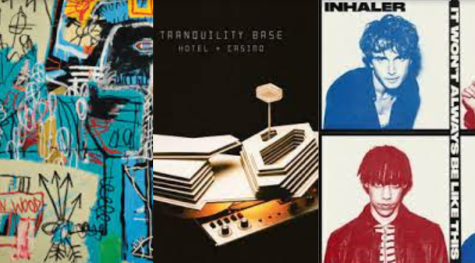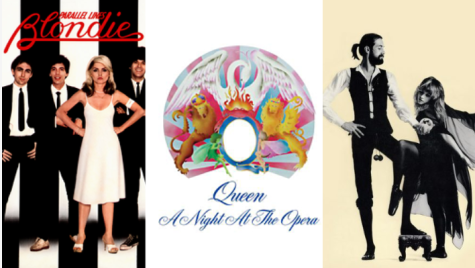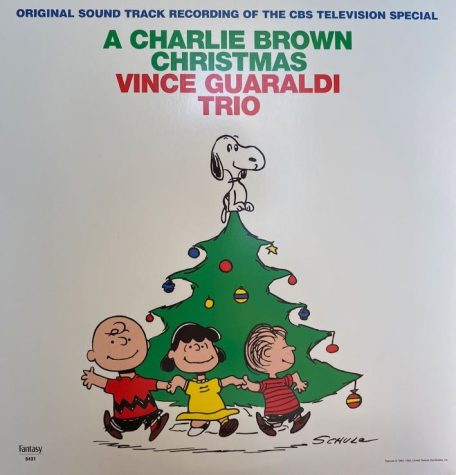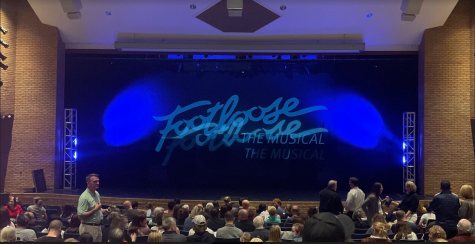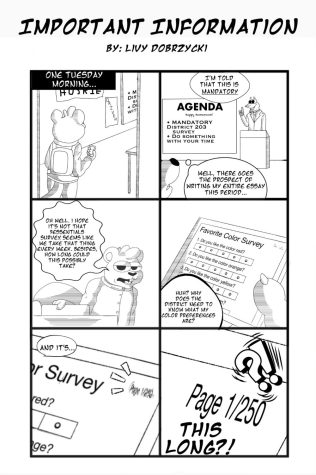Column: Behind the film

Photo by Grace Ainger
Disclaimer: This column reveals some plot points of the series “Big Little Lies” and the movie “Crazy Rich Asians.”
Films are beautifully complex. So many elements come together as one to make a message run clear. However, some of these film production elements are rarely recognized, or rather, understood. From music to cinematography, let’s go behind the film.
In this edition, we will be discussing music, specifically the music chosen or composed for the background of a scene. Music enhances, supports and changes movies and TV shows, but how? Let’s dive into the scenes:
“The Crown”’s soundtrack uses a lot of the same music techniques, the build and countermelodies, to produce similar effects. In season two, “Headlines” is played as newspapers print the announcement of Prince Philip’s principal private secretary’s divorce. This divorce and the rumors that arise reflect poorly on the actions of Philip himself. The violins create a quick paced melody while the cellos create a smooth, cool countermelody. The quick melody represents the royal family’s panic over these rumours. The cellos symbolize what they display to the public about Elizabeth and Philip’s relationship: calm and full of love. The cellos tend to mask the sound of the violins and vice versa, relaying the power struggle between chaos and peace. As the rumors get louder, so does the song.
Documentaries also use music in order to further their message. Netflix recently released season two of their hit show “Cheer,” which follows the Navarro College cheer team on their road to the national competition. In the last scenes of season two, members of the cheer team are reflecting on what the cheer family and home means to them. Jerry Jeff Walker’s song “London Homesick Blues” plays in the background with the lyric, “I wanna go home with the armadillo.” Cheerleading is their home and “the armadillo” is the family. Despite any sadness, hardship or adversity in their lives, they always have a family and home to come back to.
Parallels are also used often in music scores. The melodies, rhythms and notes will mirror the plot or the tone behind a scene. “Crazy Rich Asians” displays this idea during arguably the most important scene of the movie.
Towards the end of the movie, Rachel Chu, our main character, meets her boyfriend’s mother, Eleanor, for a game of Mahjong. Mahjong is a tile game that originated in China, which requires strategy and wit. I had never heard of Mahjong before this movie, but the significance of Eleanor’s win completely changed the scene. Rachel had the winning piece and could have won the game, but she knew that Eleanor needed that piece as well to win. She made the choice to give up the piece for Eleanor just as she did for Nick. During this scene, Rachel and Nick’s theme is reprised. The love theme represents Rachel and Nick’s relationship and is called back during their strongest moments. However, this theme is much softer and slower, signifying that their relationship is slipping away. Rachel is letting go of her love for him so he can be with his family. The violin and low string countermelodies reveal Rachel’s inner struggles with her heart and letting go to benefit Nick. Both the music and the Mahjong game convey the same message: Rachel would do anything for Nick.
“Big Little Lies” sets the example for music in film. The show uses everything we have already discussed: it represents characters, it parallels songs and story lines and it foreshadows events, people and feelings throughout the entire show.
Celeste is a complex and misunderstood character in the series. Throughout the show, Monterey residents describe her and Perry’s relationship as perfect, idyllic and too good to be true, however, we find out it’s far from this. The very first scene and song of the couple foreshadows what we will find out about Perry’s volatile treatment and control of Celeste and her life. We first see Celeste’s face come on the screen to the words “I’m a victim” from Charles Bradley’s 2013 song “Victim of Love.” Celeste is a victim of love and the song foreshadows that Celeste will use her “love” for Perry as an excuse for his anger. Four episodes later, more about Celeste and Perry’s real relationship is revealed. “Straight From the Heart” by Irma Thomas plays in the background as Celeste reflects on recent encounters with Perry. Celeste “loves” Perry and she still carries the hope she’s had for years: that he will “make her forget the pain that he caused.” In reality, she loves the idea of Perry and wishes he would become the person that she’s created in her head. The song repeats again in the next episode after another issue with Perry arises. “I think of all the things/that I wanted of you” parallels what “Victim of Love” suggested earlier but in a new light. Celeste is coming to terms with the fact that Perry won’t change. In both of these instances, the music helps the audience understand Celeste’s inner battle between her thoughts and feelings. It helps develop Celeste’s character. As the music changes, so does she.
We see a character’s arc represented by music in another main character, Madeline. The feisty, quick witted, stay-at-home mom whose problems grow bigger and bigger as the show progresses. By episode four, Madeline’s daughter has moved in with her ex-husband. She and her current husband are fighting as this is happening. In both of these issues, people have attacked Madeline’s character. “This Feeling” by Alabama Shakes becomes Madeline’s reminder of who she is. The line “I’ve been having me a real hard time, but it feels so nice to know I’m gonna be alright” defines her outlook on life and how, despite adversity, she still knows herself. The song comes back an episode later as Madeline’s list of problems and issues grows longer. The uglier side of her past starts to creep into the light and the song is reminding Madeline again of her character. The song ends abruptly by a phone call from a friend expressing her appreciation for what Madeline has done for her in the past couple months. This stark contrast from everyone else in Madeline’s life was enough to push her forward and work through her problems.
Whether it’s a score or song, foreshadowing or representing, the music in the background supports and enhances the scene. It moves the story forward, adds depth and, most of all, enhances the complexity of the plot.

Grace is a senior at North and is thrilled to begin her second year of The North Star as Managing Editor. She’s excited to pursue her own journalistic...






